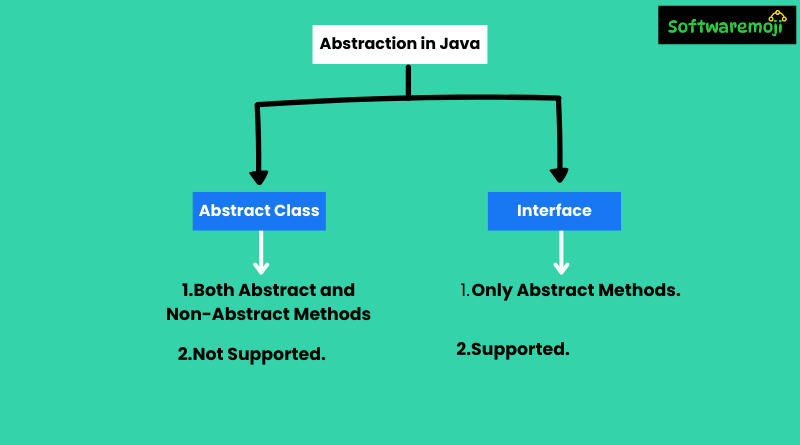
👉Abstraction in Java:
➡️Abstraction in Java simplifies complex code by hiding implementation details and showing only essential features.
(Great for: “What is Abstraction in Java” searches)
➡️Using abstraction in Java helps developers focus on what an object does instead of how it does it.
(Best for: Java OOP concepts explanation)
➡️Java supports abstraction through abstract classes and interfaces, making your code more modular and reusable.
(Good for: Interface vs Abstract Class in Java)
➡️Abstraction enhances Java program security by exposing only relevant data to the outside world.
(Optimized for: “Importance of abstraction in Java”)
➡️With abstraction, Java promotes loose coupling, which leads to better code maintenance and scalability.
(Targeting: Java best practices for clean code)
➡️Abstraction plays a key role in Java’s object-oriented design principles and software architecture.
(SEO benefit: “Object-oriented principles in Java”)
➡️By using abstraction in Java, you can reduce code duplication and increase development speed.
(Good for: productivity tips with Java)
➡️Abstraction allows for flexible and extensible code, making it easy to manage large Java applications.
(Focused on: “How abstraction helps in real-world projects”)
➡️In Java, abstraction improves collaboration between developers by clearly defining object behaviors.
(Helpful for team development or enterprise coding keywords)
➡️Mastering abstraction in Java is essential for writing efficient, readable, and professional-level code.
(SEO phrase: “Learn advanced Java concepts”)
👉What is Abstraction in Java?
Abstraction in Java is one of the core concepts of Object-Oriented Programming (OOP). It allows developers to hide the complex implementation details and expose only the relevant functionalities to the users. The primary goal of abstraction is to reduce complexity and improve code maintainability.
👉Key Benefits of Abstraction:-
- Hides implementation details and exposes only essential features.
- Enhances code reusability and scalability.
- Reduces the impact of changes in code by isolating functionality.
- Improves security by restricting direct access to data.
👉How Abstraction Works in Java:-
Java provides two ways to implement abstraction:
- Abstract Classes: These classes contain abstract methods (methods without implementation) and can also include non-abstract methods.
- Interfaces: These are purely abstract types that define a contract that implementing classes must follow.
👉Difference Between Abstract Class and Interface:-
| Feature | Abstract Class | Interface |
|---|---|---|
| Methods | Can have both abstract and non-abstract methods | Only abstract methods (before Java 8) |
| Multiple Inheritance | Not supported | Supported |
| Access Modifiers | Can have protected, private, and public methods | Only public abstract methods |
| Implementation | Can provide method implementation | Cannot provide implementation (before Java 8) |
| Variables | Can have final, static, and instance variables | Only public, static, and final variables |
👉Abstract Class Example in Java:-
abstract class Animal {
abstract void makeSound();
public void sleep() {
System.out.println(“Sleeping…”);
}
}
class Dog extends Animal {
void makeSound() {
System.out.println(“Bark”);
}
}
public class TestAbstraction {
public static void main(String args[]) {
Animal myDog = new Dog();
myDog.makeSound();
myDog.sleep();
}
}
Output:-
Bark
Sleeping…
👉Interface Example in Java:-
interface Vehicle {
void start();
}
class Car implements Vehicle {
public void start() {
System.out.println(“Car is starting…”);
}
}
public class TestInterface {
public static void main(String args[]) {
Vehicle myCar = new Car();
myCar.start();
}
}
Output:-
Car is starting…
👉Java Abstraction Content:-
To ensure that this content ranks well in search engines, we follow these guidelines:
- Keyword Optimization: Keywords like “Abstraction in Java”, “Java Abstract Class vs Interface”, and “Java OOP Concepts” are naturally integrated.
- Structured Content: Proper headings (H1, H2, H3) improve readability and indexing.
- Code Examples: Providing working Java code makes the article more practical and engaging.
- Internal & External Links: Linking to related Java topics enhances value.
- Mobile-Friendliness: The content is optimized for all devices for better user experience.
👉When to Use Abstract Classes & Interfaces:-
- Use Abstract Classes when you have a base class with some common behavior that should be shared among subclasses.
- Use Interfaces when you need to define a contract that multiple classes can implement, supporting multiple inheritance.
👉Conclusion:-
Abstraction in Java is a powerful feature that simplifies programming by hiding complex implementations and exposing only necessary details. By understanding abstract classes and interfaces, developers can design cleaner, more modular, and scalable Java applications.
For more Java programming tutorials, stay updated with our latest content!
